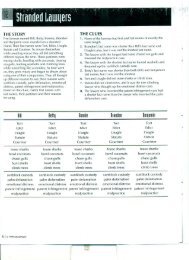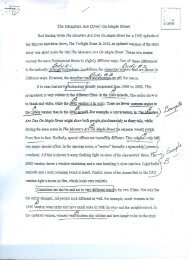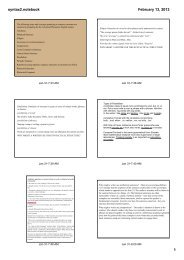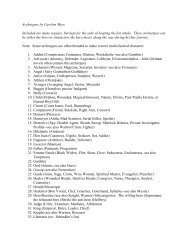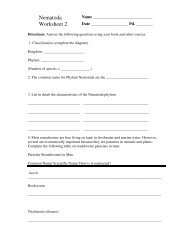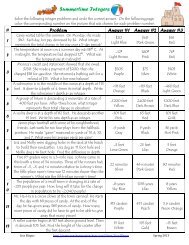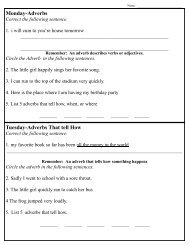Create successful ePaper yourself
Turn your PDF publications into a flip-book with our unique Google optimized e-Paper software.
Name Date Class<br />
2<br />
<strong>Study</strong> Guide<br />
86 Strength of Acids and Bases<br />
Strength of Acids and Bases<br />
Chapter<br />
23<br />
Directions: The pH values of several common substances are listed below. Place each item from the list on the<br />
pH scale in its proper location. The first one has been done for you.<br />
pH<br />
0 1 2 3 4 5 6 7 8 9 10 11 12 13 14<br />
pure water 7.0<br />
ocean water 8.5<br />
tomatoes 4.0<br />
lye 13.8<br />
stomach acid 1.0<br />
pure water<br />
lemons 2.5<br />
shampoo 5.8<br />
bananas 5.2<br />
blood 7.2<br />
milk of magnesia 10.5<br />
ammonia 11.5<br />
eggs 7.8<br />
soap 10.0<br />
vinegar 3.0<br />
Directions: Complete the table below by writing the name of each of the substances above under the proper<br />
heading. Place substances with a pH lower than 3.0 in the strong acids column. Place substances with a pH<br />
higher than 10.0 in the strong bases column.<br />
1. Strong acids 2. Weak acids 3. Weak bases<br />
4. Strong bases<br />
Directions: Answer the following questions on the lines provided.<br />
5. Is pure water an acidic, basic, or neutral substance?<br />
6. Is the pH of a strong acid higher or lower than the pH of a weak acid of the same concentration?<br />
7. Is the pH of a strong base higher or lower than the pH of a weak base of the same concentration?<br />
8. On the pH scale, what are the values of acids and what are the values of bases?<br />
Copyright © Glencoe/McGraw-Hill, a division of the McGraw-Hill Companies, Inc.





